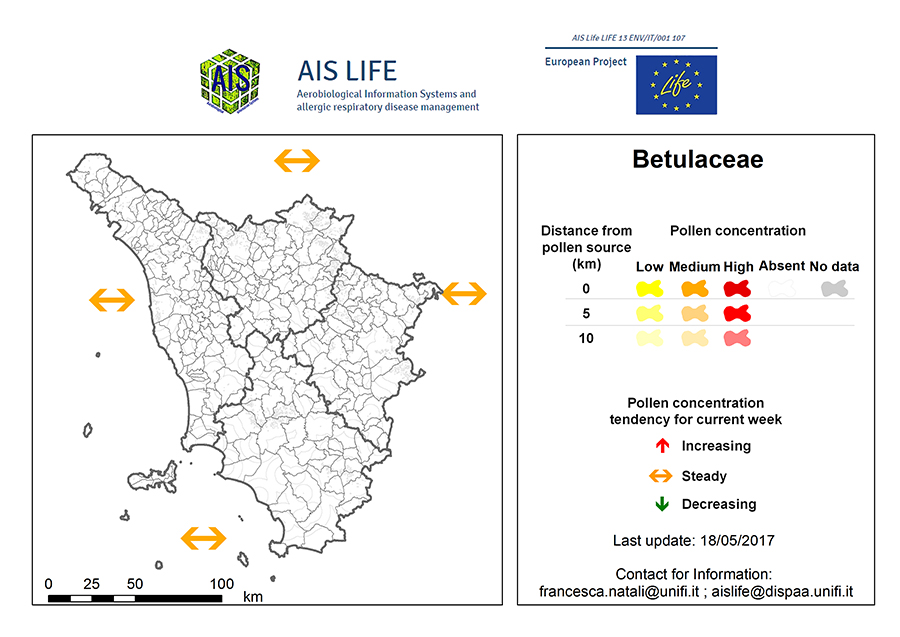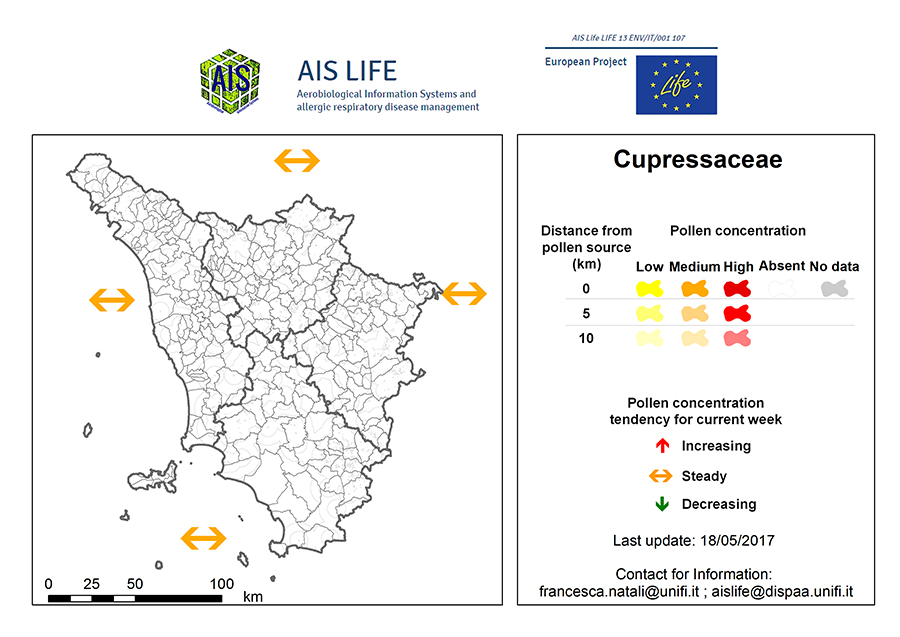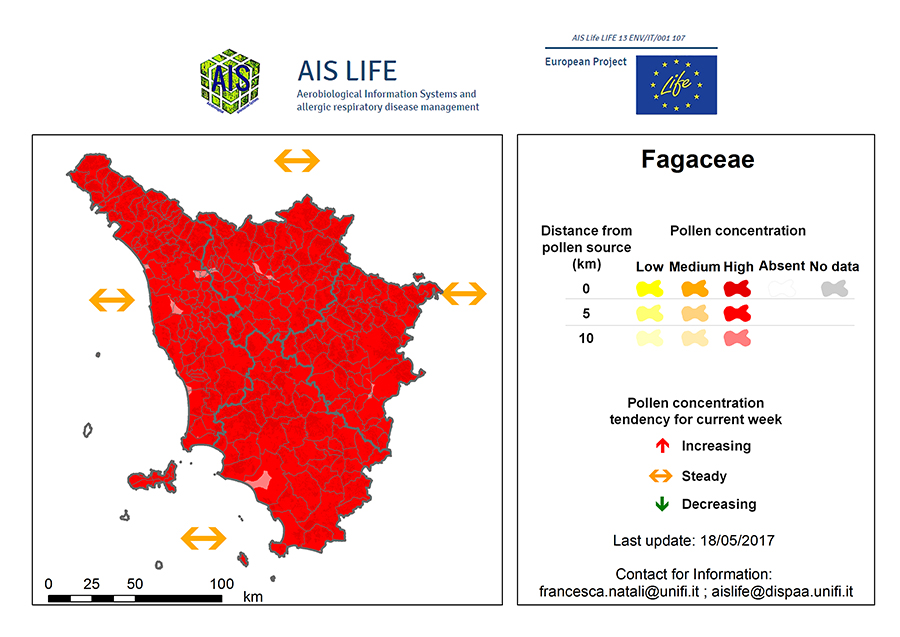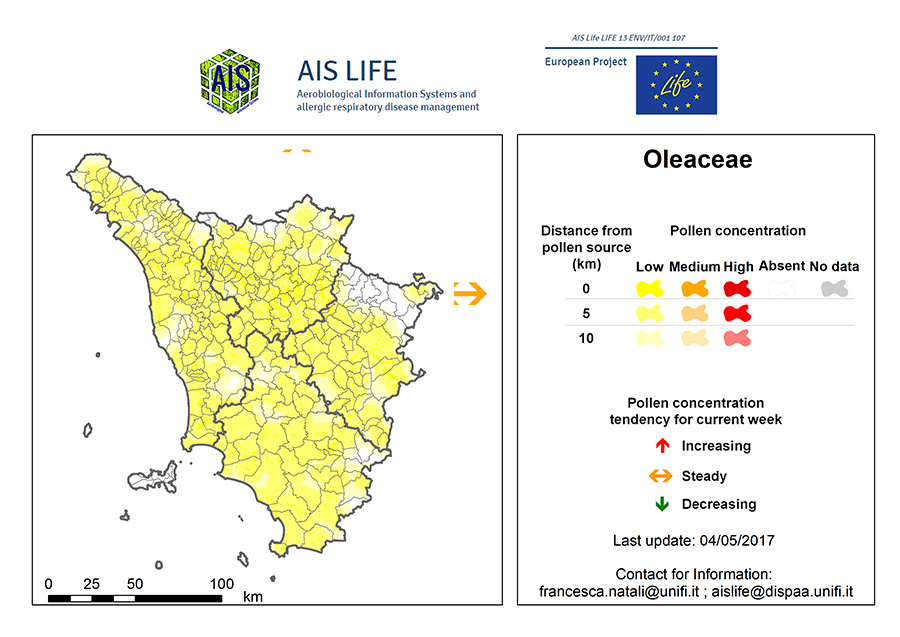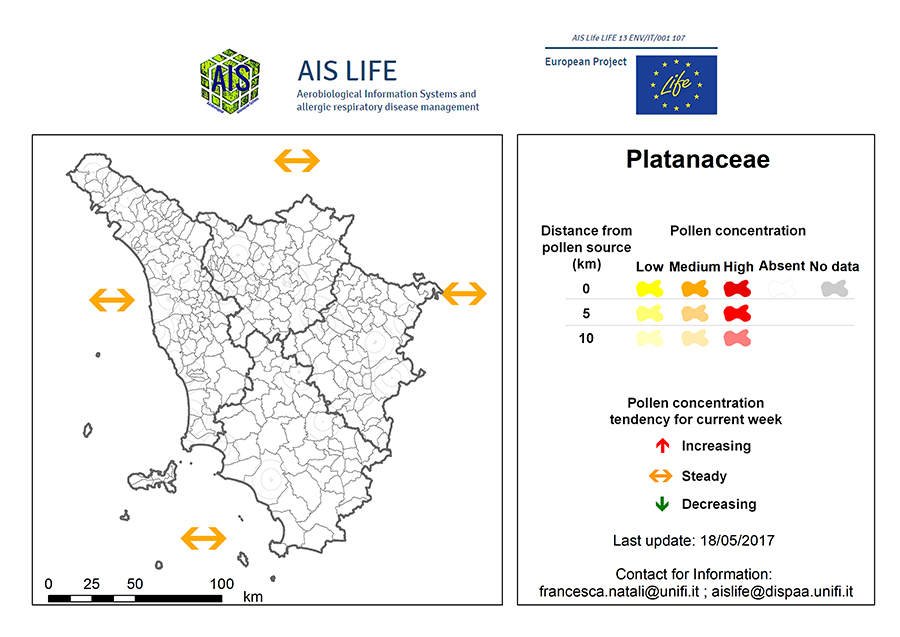
Action B3
Case Study Italy:
Mapping of urban and rural environments through land use and allergic plants data, agroclimatic indices
The maps are realized by Department of Agrifood Production and Environmental Sciences – University of Florence.
The study has considered the most common tree species in the Tuscan territory that are the highest provokers of allergy. Families considered were been: Oleaceae (olive and ash), Fagaceae (Oak, beech and chestnut), Corylaceae (Hazel, hornbeam and white), Betulaceae (alder and birch), Cupressaceae (Cypress), Platanaceae (plane tree).
The maps are diffused every week and they represent the pollen concentration, classified in high, medium, low or absent, for individual tree family in each area study. For each allergic family the tendency of concentration trends (increasing, decreasing or stationary) to the week to come has been provided.
Buffering was defined and it has used to establish ‘zones’ around potential sources of aeroallergens, that reflects the perceived area in which those sources could have affected the population. Thus, two buffers around those sources with a diameter of 5 km and 10 km were established. The buffer areas are indicated with the same color (different tonality) according the concentration of pollen source.
For each allergic species the tendency of concentration trends (increasing, decreasing or steady) for the week to come is be also provided.
The meteorological forecast are provided by LaMMA Consortium – Environmental Modelling and Monitoring Laboratory for Sustainable Development.
The aerobiological data are provided:
Biology Department, University of Pisa, from Pisa station.
ARPAT, Agenzia Regionale per la Protezione Ambientale della Toscana, from Grosseto and Florence station
Private Citizen, from Arezzo station.
Contact: francesca.natali@unifi.it
Scaricare il seguente questionario e rimandare al seguente indirizzo : francesca.natali@unifi.it
(Se non si apre la finestra per il download cliccare sul link con il tasto destro del mouse e dal menu contestuale scegliere “salva link con nome”)
